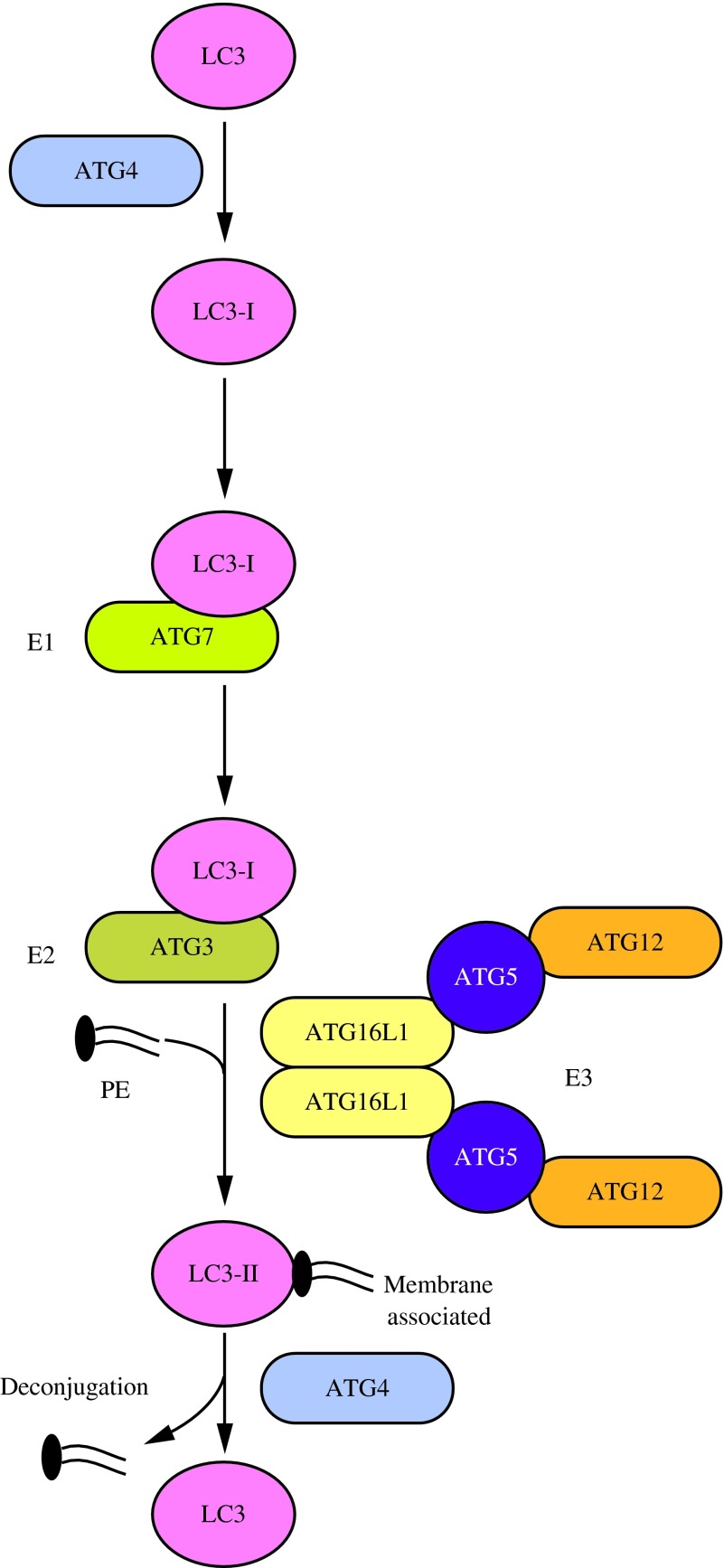
Autophagy Vesicle Elongation is a crucial phase in the autophagy process, primarily involving the conjugation of LC3 protein (LC3 Conjugation) and the expansion and closure of the autophagosome membrane. During this process, LC3 protein is cleaved from its cytosolic form, LC3-I, and converted to LC3-II, which then conjugates with phosphatidylethanolamine (PE) and anchors onto the autophagosome membrane. This conversion requires the participation of key proteins such as ATG7, ATG3, and the ATG5-ATG12 complex, which work together to promote the expansion and closure of the autophagosome membrane. The formation of LC3-II not only signifies the maturation of the autophagosome but also participates in the recognition and binding of cargo, helping to engulf target proteins and organelles into the autophagosome. Ultimately, the mature autophagosome fuses with lysosomes to form autolysosomes, completing the degradation and recycling of the cargo. This process is of great significance for maintaining cellular homeostasis, responding to stress, and renewing organelles.
Product List
| Target | Catalog# | Product Name | Reactivity | Application |
|---|---|---|---|---|
LC3A | LC3A Rabbit Monoclonal antibody | Human,Mouse,Rat | WB,IHC,IF,IP,ELISA |
Related Products
Super-sensitive ECL chemiluminescent reagent
References
- An overview of autophagy: morphology, mechanism, and regulation. Parzych KR, et al. Antioxid Redox Signal. 2014. [PMID: 23725295]
- LC3 and GATE-16/GABARAP subfamilies are both essential yet act differently in autophagosome biogenesis. Weidberg H, et al. EMBO J. 2010. [PMID: 20418806]
- Lysosomal turnover, but not a cellular level, of endogenous LC3 is a marker for autophagy. Tanida I, et al. Autophagy. 2005. [PMID: 16874052]

